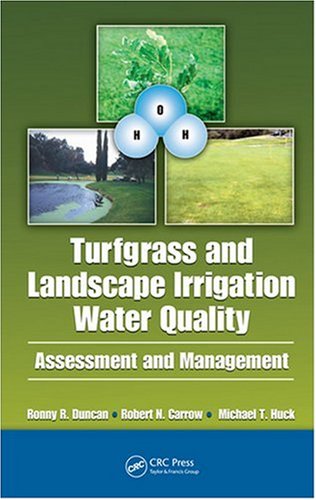

Most ebook files are in PDF format, so you can easily read them using various software such as Foxit Reader or directly on the Google Chrome browser.
Some ebook files are released by publishers in other formats such as .awz, .mobi, .epub, .fb2, etc. You may need to install specific software to read these formats on mobile/PC, such as Calibre.
Please read the tutorial at this link. https://ebooknice.com/page/post?id=faq
We offer FREE conversion to the popular formats you request; however, this may take some time. Therefore, right after payment, please email us, and we will try to provide the service as quickly as possible.
For some exceptional file formats or broken links (if any), please refrain from opening any disputes. Instead, email us first, and we will try to assist within a maximum of 6 hours.
EbookNice Team

Status:
Available5.0
32 reviewsWith the increased use of alternative irrigation water sources on turfgrass and landscape sites, their management is becoming more complex and whole ecosystems-oriented. Yet few turfgrass managers have received formal training in the intricacies of irrigation water. Turfgrass and Landscape Irrigation Water Quality: Assessment and Management provides a comprehensive, science-based review of irrigation water quality. The book examines field problems in a logical manner, provides clear scientific explanations, and offers detailed practical information for resolving each specific problem in an environmentally sustainable manner.
Divided into four parts, the book begins with an overview of the assessment of irrigation water. It discusses factors that affect the quality of water, assists readers in understanding irrigation water quality tests, and examines field monitoring. The second part focuses on explaining scientific irrigation water quality situations or challenges associated with various water sources, including saline, seawater, and reclaimed irrigation water, as well as stormwater reuse.
The next section explores management options for site-specific problems. The authors discuss irrigation system design when confronted with poor quality water, salt leaching, water acidification, and turfgrass nutritional considerations, and discusses lake, pond, and stream management and other water issues. Lastly, the text addresses potential environmental concerns related to irrigation water sources on the watershed/landscape level. The book contains several case studies which further clarify the material and provides a comprehensive appendix list of landscape plants and their relative salinity tolerances.
The diversity and nature of various water quality related challenges are quite daunting, even for the most seasoned professional. This volume provides a foundation for understanding the complexities of water quality that is certain to lead to science-based management decisions that are environmentally friendly and sustainable for years to come.